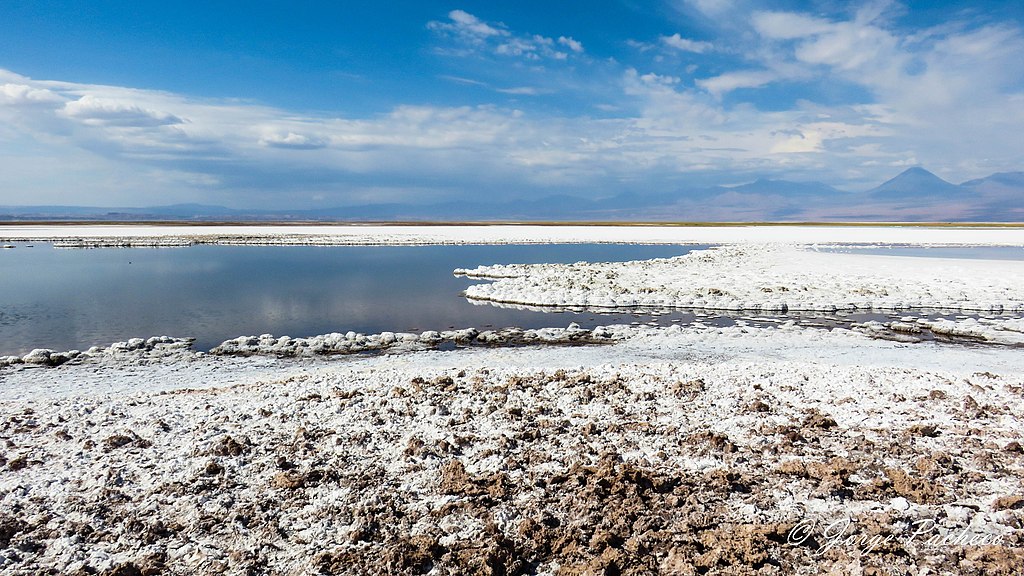
by DGR News Service | May 8, 2021 | Biodiversity & Habitat Destruction, Colonialism & Conquest, Education, Mining & Drilling, Strategy & Analysis, Toxification
By Straquez
Mine is the Ignorance of the Many
I was born in Mexico City surrounded by big buildings, a lot of cars and one of the most contaminated environments in the world. When I was 9 years old my family moved to Tijuana in North West Mexico and from this vantage point, on the wrong side of the most famous border town in the world, I became acquainted with American culture. I grew up under the American way of life, meaning in a third-world city ridden with poverty, corruption, drug trafficking, prostitution, industry and an immense hate for foreigners from the South.
Through my school years, I probably heard a couple of times how minerals are acquired and how mining has brought “prosperity” and “progress” to humanity. I mean, even my family name comes from Cornwall, known for its mining sites. The first Straffon to arrive from England to Mexico did so around 1826 in Real del Monte in the State of Hidalgo (another mining town!). However, it is only recently, since I have started following the wonderful work being done in Thacker Pass by Max Wilbert and Will Falk that the horrors of mining came into focus and perspective.
What is mining? You smash a hole in the ground, go down the hole and smash some more then collect the rocks that have been exposed and process them to make jewelry, medicines or technology. Sounds harmless enough. It’s underground and provides work and stuff we need, right? What ill could come out of it? After doing some digging (excuse the pun), I feel ashamed of my terrible ignorance. Mine is the ignorance of the many. This ignorance is more easily perpetuated in a city where all the vile actions are done just so we can have our precious electronics, vehicles and luxuries.
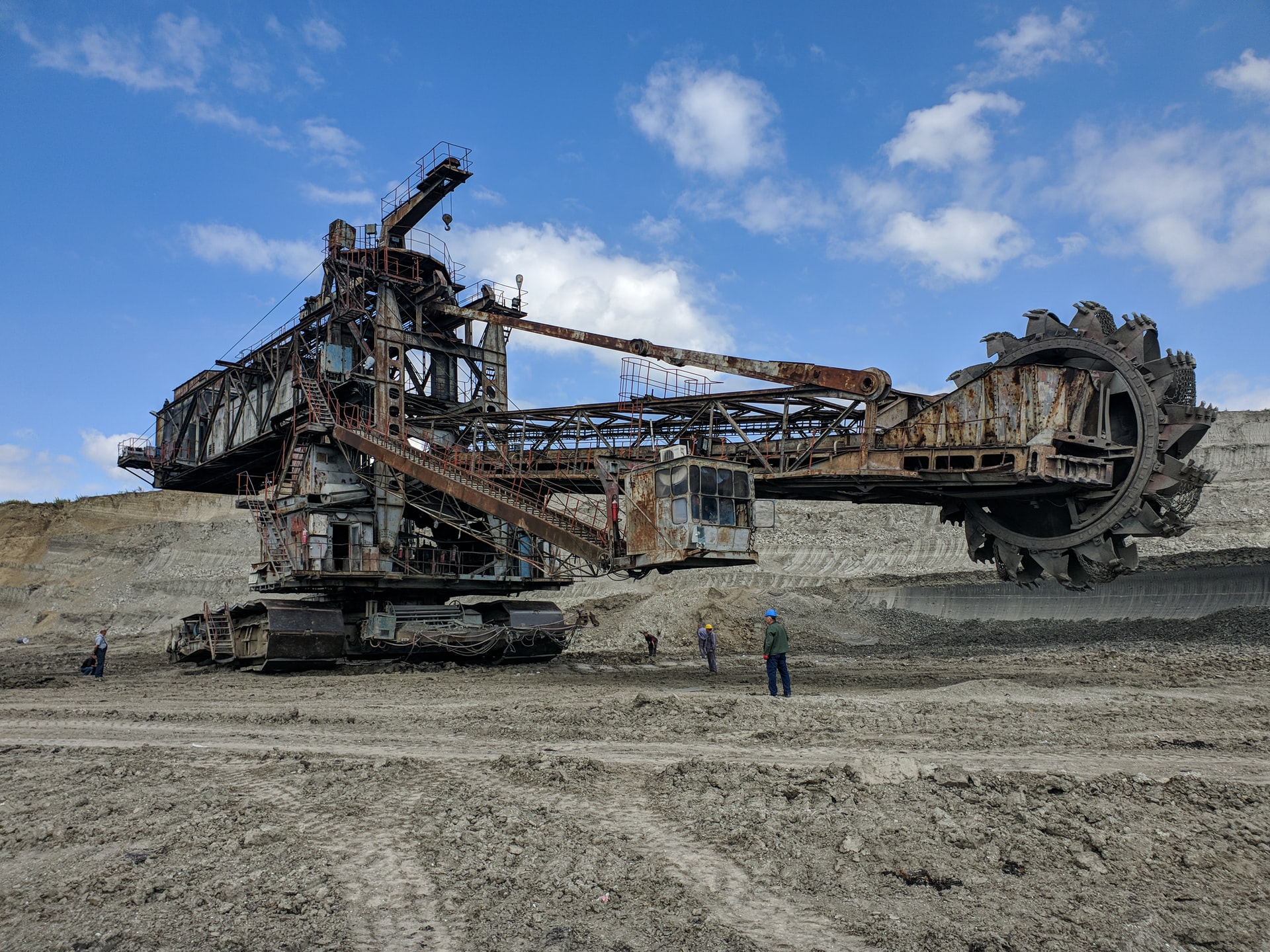
Mine Inc.
Mining, simply put, is the extraction of minerals, metals or other geological materials from earth including the oceans. Mining is required to obtain any material that cannot be grown or artificially created in a laboratory or factory through agricultural processes. These materials are usually found in deposits of ore, lode, vein, seam, reef or placer mining which is usually done in river beds or on beaches with the goal of separating precious metals out of the sand. Ores extracted through mining include metals, coal, oil shale, gemstones, calcareous stone, chalk, rock salt, potash, gravel, and clay. Mining in a wider sense means extraction of any resource such as petroleum, natural gas, or even water.
Mining is one of the most destructive practices done to the environment as well as one of the main causes of deforestation. In order to mine, the land has to be cleared of trees, vegetation and in consequence all living organisms that depend on them to survive are either displaced or killed. Once the ground is completely bare, bulldozers and excavators are used to smash the integrity of the land and soil to extract the metals and minerals.
Mining comes in different forms such as open-pit mining. Like the name suggests, is a type of mining operation that involves the digging of an open pit as a means of gaining access to a desired material. This is a type of surface mining that involves the extraction of minerals and other materials that are conveniently located in close proximity to the surface of the mining site. An open pit mine is typically excavated with a series of benches to reach greater depths.
Open-pit mining initially involves the removal of soil and rock on top of the ore via drilling or blasting, which is put aside for future reclamation purposes after the useful content of the mine has been extracted. The resulting broken up rock materials are removed with front-end loaders and loaded onto dump trucks, which then transport the ore to a milling facility. The landscape itself becomes something out of a gnarly science-fiction movie.
Once extracted, the components are separated by using chemicals like mercury, methyl-mercury and cyanide which of course are toxic to say the least. These chemicals are often discharged into the closest water sources available –streams, rivers, bays and the seas. Of course, this causes severe contamination that in turn affects all the living organisms that inhabit these bodies of water. As much as we like to distinguish ourselves from our wild kin this too affects us tremendously, specially people who depend on the fish as their staple food or as a livelihood.
One of the chemical elements that is so in demand in our current economy is Lithium. Lithium battery production today accounts for about 40% of lithium mining and 25% of cobalt mining. In an all-battery future, global mining would have to expand by more than 200% for copper, by a minimum of 500% for lithium, graphite, and rare earths, and far more for cobalt.

Lithium – Isn’t that a Nirvana song?
Lithium is the lightest metal known and it is used in the manufacture of aircraft, nuclear industry and batteries for computers, cellphones, electric cars, energy storage and even pottery. It also can level your mood in the form of lithium carbonate. It has medical uses and helps in stabilizing excessive mood swings and is thus used as a treatment of bipolar disorder. Between 2014 and 2018, lithium prices skyrocketed 156% . From 6,689 dollars per ton to a historic high of 17,000 dollars in 2018. Although the market has been impacted due to the on-going pandemic, the price of lithium is also rising rapidly with spodumene (lithium ore) at $600 a ton, up 40% on last year’s average price and said by Goldman Sachs to be heading for $676/t next year and then up to $707/t in 2023.
Lithium hydroxide, one of the chemical forms of the metal preferred by battery makers, is trading around $11,250/t, up 13% on last year’s average of $9978/t but said by Goldman Sachs to be heading for $12,274 by the end of the year and then up to $15,000/t in 2023. Lithium is one of the most wanted materials for the electric vehicle industry along cobalt and nickel. Demand will only keep increasing if battery prices can be maintained at a low price.
Simply look at Tesla’s gigafactory in the Nevada desert which produces 13 million individual cells per day. A typical Electronic Vehicle battery cell has perhaps a couple of grams of lithium in it. That’s about one-half teaspoon of sugar. A typical EV can have about 5,000 battery cells. Building from there, a single EV has roughly 10 kilograms—or 22 pounds—of lithium in it. A ton of lithium metal is enough to build about 90 electric cars. When all is said and done, building a million cars requires about 60,000 tons of lithium carbonate equivalent (LCE). Hitting 30% penetration is roughly 30 million cars, works out to about 1.8 million tons of LCE, or 5 times the size of the total lithium mining industry in 2019.
Considering that The United States-Mexico-Canada Agreement (USMCA) is being negotiated, lithium exploitation is a priority as a “must be secured” supply chain resource for the North American corporate machine. In 3 years, cars fabricated in these three countries must have at least 75% of its components produced in the North American region so they can be duty-free. This includes the production of lithium batteries that could also become a profitable business in Mexico.
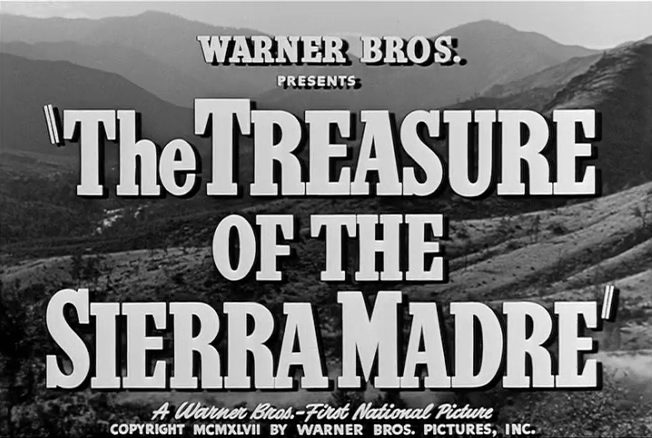
Sonora on Lithium
In the mythical Sierra Madre Occidental (“Western Mother” Mountain Range) which extends South of the United States, there is a small town known as Bacadéhuachi. This town is approximately 11 km away from one of the biggest lithium deposits in the world known as La Ventana. At the end of 2019, the Mexican Government confirmed the existence of such a deposit and announced that a concession was already granted on a joint venture project between Bacanora Minerals (a Canadian company) and Gangfeng Lithium (a Chinese company) to extract the coveted mineral. The news spread and lots of media outlets and politicians started to refer to lithium as “the oil of the future.”
I quote directly the from Bacanora Lithium website:
Sonora Lithium Ltd (“SLL”) is the operational holding company for the Sonora Lithium Project and owns 100% of the La Ventana concession. The La Ventana concession accounts for 88% of the mined ore feed in the Sonora Feasibility Study which covers the initial 19 years of the project mine life. SLL is owned 77.5% by Bacanora and 22.5% by Ganfeng Lithium Ltd.
Sonora holds one of the world’s largest lithium resources and benefits from being both high grade and scalable. The polylithionite mineralisation is hosted within shallow dipping sequences, outcropping on surface. A Mineral Resource estimate was prepared by SRK Consulting (UK) Limited (‘SRK’) in accordance with NI 43-101.”
The Sonora Lithium Project is being developed as an open-pit strip mine with operation planned in two stages. Stage 1 will last for four years with an annual production capacity of approximately 17,500t of lithium carbonate, while stage 2 will ramp up the production to 35,000 tonnes per annum (tpa). The mining project is also designed to produce up to 28,800 tpa of potassium sulfate (K2SO4), for sale to the fertilizer industry.
On September 1st, 2020, Mexico’s President, Andres Manuel Lopez Obrador, dissolved the Under-secretariat of Mining as part of his administration’s austerity measures. This is a red flag to environmental protection as it creates a judicial void which foreign companies will use to allow them greater freedom to exploit more and safeguard less as part of their mining concession agreements.
Without a sub-secretariat, mediation between companies, communities and environmental regulations is virtually non-existent. Even though exploitation of this particular deposit had been adjudicated a decade ago under Felipe Calderon’s administration, the Mexican state is since then limited to monitoring this project. This lack of regulatory enforcement will catch the attention of investors and politicians who will use the situation to create a brighter, more profitable future for themselves and their stakeholders.
To my mind there is a bigger question – how will Mexico benefit from having one of the biggest deposits of lithium in the world? Taking into account the dissolution of the Mining sub-secretariat and the way business and politics are usually handled in Mexico, I do wonder who will be the real beneficiaries of the aforementioned project.
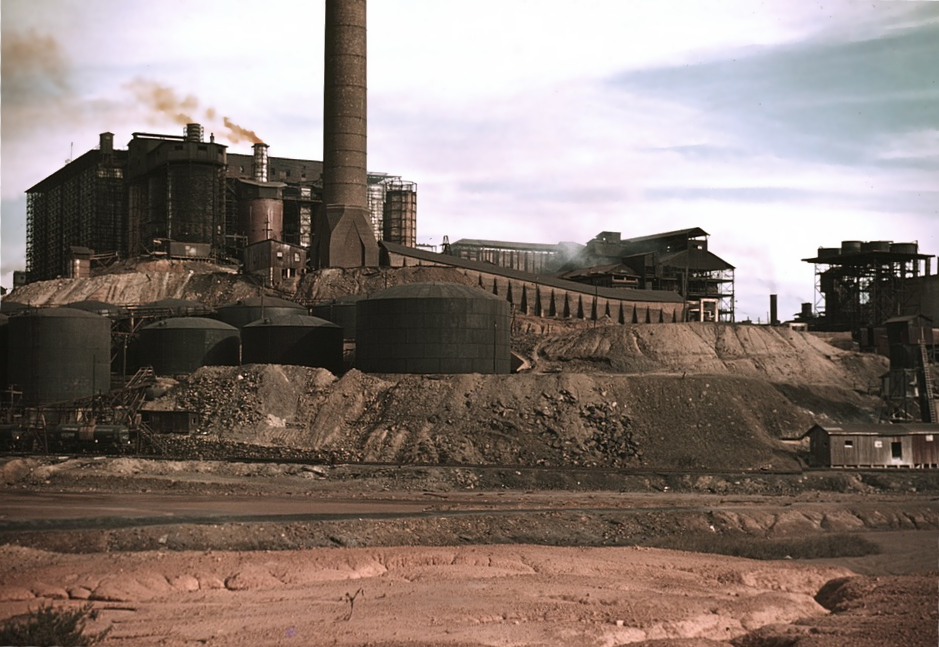
Extra Activism
Do not forget, mining is an integral part of our capitalist economy; mining is a money making business – both in itself and as a supplier of materials to power our industrial civilization. Minerals and metals are very valuable commodities. Not only do the stakeholders of mining companies make money, but governments also make money from revenues.
There was a spillage in the Sonora river in 2014. It affected over 22,000 people as 40 million liters of copper sulfate were poured into its waters by the Grupo Mexico mining group. Why did this happen? Mining companies are run for the profit of its stakeholder and it was more profitable to dump poison into the river than to find a way to dispose it with a lower environmental impact. Happily for the company stakeholders, company profit was not affected in the least.
Even though the federal Health Secretariat in conjunction with Grupo México announced in 2015 the construction of a 279-million-peso (US $15.6-million) medical clinic and environmental monitoring facility to be known as the Epidemiological and Environmental Vigilance Unit (Uveas) to treat and monitor victims of the contamination, until this day it has not been completed. The government turned a blind eye to the incident after claiming they would help. All the living beings near the river are still suffering the consequences.
Mining is mass extraction and this takes us to the practice of “extractivism” which is the destruction of living communities (now called “resources”) to produce stuff to sell on the world market – converting the living into the dead. While it does include mining – extraction of fossil fuels and minerals below the ground, extractivism goes beyond that and includes fracking, deforestation, agro-industry and megadams.
If you look at history, these practices have deeply affected the communities that have been unlucky enough to experience them, especially indigenous communities, to the advantage of the so-called rich. Extractivism is connected to colonialism and neo-colonialism; just look at the list of mining companies that are from other countries – historically companies are from the Global North. Regardless of their origins, it always ends the same, the rich colonizing the land of the poor. Indigenous communities are disproportionately targeted for extractivism as the minerals are conveniently placed under their land.
While companies may seek the state’s permission, even work with them to share the profits, they often do not obtain informed consent from communities before they begin extracting – moreover stealing – their “resources”. The profit made rarely gets to the affected communities whose land, water sources and labor is often being used. As an example of all of this, we have the In Defense of the Mountain Range movement in Coatepec, Veracruz. Communities are often displaced, left with physical, mental and spiritual ill health, and often experience difficulties continuing with traditional livelihoods of farming and fishing due to the destruction or contamination of the environment.
Cristopher Straffon Marquez a.k.a. Straquez is a theater actor and language teacher currently residing in Tijuana, Baja California, Mexico. Artist by chance and educator by conviction, Straquez was part of the Zeitgeist Movement and Occupy Tijuana Movement growing disappointed by good intentions misled through dubious actions. He then focused on his art and craft as well as briefly participating with The Living Theatre until he stumbled upon Derrick Jensen’s Endgame and consequently with the Deep Green Resistance: Strategy to Save the Planet both changing his mind, heart and soul. Since then, reconnecting with the land, decolonizing the mind and fighting for a living planet have become his goals.

by DGR News Service | May 2, 2021 | Gender, Male Supremacy, Repression at Home, Women & Radical Feminism
In this article which originally appeared on FeministCurrent, Megan Murphy is talking with two members of the Irish Women’s Lobby about their fight against the Gender Recognition Act and its consequences for Irish women.
By Megan Murphy
The Irish Women’s Lobby (IWD) launched on March 8, 2021. I interviewed three members of the group recently about their goals and the particular issues they are dealing with in Ireland.
Meghan Murphy: What is the purpose of the Irish Women’s Lobby? What are your main aims and fights?
IWL: Well I guess the first thing we’d say is that, as Irish women, we’re in a very peculiar and disturbing time in Irish history. We are living in an environment and time where not only are our rights being eroded in Irish legislation, but the erosion of our rights is being championed as progress by people who should know better — among them some who are well paid to know better. There’s nothing unique about our situation, we see this being rolled out all across the Western world, but it is significantly more advanced in Ireland than in many other nations, and we have the “self-ID” [this is shorthand for this kind of legislation, allowing essentially anyone to self-identify as the opposite sex, easily] aspect of the Irish 2015 Gender Recognition Act to thank for that.
We set up the Irish Women’s Lobby (IWL) in response to this and other situations women are currently facing here. Ireland has become an increasingly hostile environment for any woman raising her voice in defense of her own sex-based rights, and this has been increasing year after year since 2015, but at this point we have reached a ludicrous level. Our predicament might have some comedic value if it weren’t so likely to cost some women their lives. This is because the situation here has advanced to the point where male sex offenders are now being incarcerated in female prisons.
The problem here is that Ireland passed the Gender Recognition Act in a form which allows legal “gender” changes without any requirement for medical intervention or evaluation. This was introduced with virtually no discussion and certainly no real investigation into possible negative repercussions. The enactment of this legislation has created a scenario where trans-identifying males can gain access to any spaces or services designated for females, with zero safeguarding. Alongside the legislation there has been relentless campaigning from “social justice” activists, propagating an environment where feminists are unable to voice their concerns without fear of retaliation.
Reflecting the power of the lobby, the takeover of the policy-making arena and NGOs in Ireland is extensive, and of course it is women who are targeted. The Irish Health Service removed all mention of “woman” and “women” from an ad campaign to prevent Cervical Cancer, apparently in an effort to be “inclusive.” Following protest spearheaded by Radicailín, a radical feminist group made up of Irish and migrant women, the ad was updated, but it still uses “woman” only once, and “people” five times (“women” doesn’t appear at all). Meanwhile, in Ireland, unlike with cervical cancer, prostate cancer remains a men-only disease, and has not magically become “gender-neutral” in an effort to be “inclusive.”
The public, for the most part, are largely unaware that the Gender Recognition Act is in place, nor do they understand the level of threat it carries for women and girls. The IWL is attempting to raise these and other issues, and create room for discussion across the public narrative. We are, of course, bullied and abused for it in a multitude of ways, as feminists are and always have been.
Our first and most urgent aim is to provide media and political representation for women in Ireland. This is because the National Women’s Council of Ireland is actively working against women’s rights. They — along with Amnesty International, Trans Equality Network Ireland, and other well-funded NGOs — signed a petition calling for the removal of “legitimate representation” from women like ourselves and others who “defend biology.” In a situation where we have the National Women’s Council of Ireland and Amnesty International demanding that any Irish woman (or man for that matter) who speaks out against the damaging and harmful effects of the 2015 Gender Recognition Act be denied media and political representation, we had no choice but to insist on our democratic right to that representation. When that letter was signed by those groups, and the National Women’s Council of Ireland in particular, we knew that as Irish women we had no choice but speak out in defiance of those who signed on to a call to silence Irish women in the public sphere. We feel the facts here speak for themselves; it should be plainly apparent that the signatories to that letter acted in a manner that was aggressive, disturbing, and blatantly totalitarian.
MM: How does the Irish women’s movement differ from the women’s movement in other parts of Europe and North America?
IWL: The women’s movement here differs in all sorts of ways, one unfortunate manifestation being the number of women who declare themselves feminists while undermining or outright aggressing against women’s sex-based rights. You’d have to despair for a feminism that doesn’t recognize its own purpose. All of this is of course heavily underpinned by social class, as is everything in Ireland. You could say class is to Ireland what race is to the United States – of course they’re not the same thing, but there are some startling parallels. In Ireland, class is the great unmentionable — you’re not supposed to talk about that. The problem is deeply rooted in our history of British colonialism, and has persisted for centuries.
Every part of the West will have its own regional issues. For us, a shift towards the left was socially necessary in order to counterbalance a national narrative that had leaned too heavily towards religious and social conservatism for too long, but we are knee-deep in neoliberal nonsense now. Some parts of the Western World have issues with the political narrative going too far right. We have the opposite problem: we’ve gone too far left — but like so many other places, it’s a “left” that has abandoned a class analysis, and with it, the working classes, both female and male. Ireland’s woke brigade have got drunk on their own Kool-Aid, but we’ve all got to share the hangover.
MM: What is the situation with prostitution currently?
IWL: The vast majority of women in Irish prostitution — about 95 per cent — are migrant women, predominantly from the poorer countries of Eastern Europe but also from Nigeria, Brazil, and parts of Asia. The percentages will fluctuate, but foreign women in the Irish sex trade always figure somewhere at 90+ per cent. That’s been the situation for years; it’s very sad. It’s also very sickening to see the Soros funded pro-prostitution lobbyists relentlessly campaign to decriminalize pimps in Ireland. Migrant women are generally paid a pittance once their pimp takes their cut, and the push to decriminalize their pimps comes from women who charge 300 and 400 euros an hour in escort prostitution and are salaried to press for the full decriminalization of the Irish sex trade on top of that. They’re in no way representative of the women who would suffer most if they got their way in decriminalizing the pimps of the Irish sex trade.
It is now illegal to purchase the body of a woman (or anyone) for sexual use in Ireland, but male habits of sexual entitlement die hard, and we would say there are not nearly enough convictions, though there have been some. There are numerous problems in this area, including that some organizations and individuals who speak out against prostitution use apolitical language, like “sex work” and “the sex buyers’ law” etc. This kind of framing argues against itself: you cannot say that prostitution is inherently violent while simultaneously framing it as employment, and you cannot say that what men purchase in prostitution is sexual access to women’s bodies while at the same time referring to them as “sex buyers.” The international abolitionist movement and the survivor’s movement in particular has very strong ties to Ireland. That movement has a language all of its own, much of it framed by survivors. It’s a pity more Irish campaigners didn’t take the time to learn it.
MM: Can you explain the issue around language a little further? What is preferable?
IWL: Terms like “sex work”, “sex buyers’ law,” and “the Equality Model” are never used here — not by anyone political, strategical, or experienced. Irish abolitionist activists say “prostitution” to refer to prostitution, “punters” to refer to johns, and “the Abolitionist Model” or “the Nordic Model” to refer to abolitionist legal frameworks. Survivors who spent a decade fighting for the Nordic Model now have to listen to the corporate reframing of “the Equality Model,” which may work well elsewhere in the world, but that’s not what Irish women fought for. This language was imposed on Irish sex-trade survivors by corporate feminists who never took the time to ask. You’d be interested to know what they’re thinking, except they’re not thinking. Feminist organizations that ignore survivor groups in their anti sex-trade campaign planning are not thinking at all.
MM: Is anything else of note happening with gender identity legislation and ideology in Ireland?
IWL: In 2007, the Irish High Court found that Ireland was in breach of the European Convention on Human Rights as it did not have a process to legally recognize the “acquired gender” of transsexual persons. In 2011, a Government Gender Recognition Advisory Group after broad consultation recommended medical gatekeeping, and living full-time for a two-year period in the “changed gender” prior to receiving a Gender Recognition Certificate (GRC). The subsequent Gender Recognition Bill published in December 2014 required medical evaluation and certification.
However, following lobbying and subterfuge, the Gender Recognition Act (GRA) that was passed in 2015 had no such requirements, or any gatekeeping whatsoever. In fact, the GRA allows any person to download and fill in an A4 form, have it notarized, making them, for all intents and purposes, legally the “opposite” sex.
The lack of any gatekeeping whatsoever means that any man — be he a rapist, a pedophile, a voyeur, or any type of sexual pervert — can obtain a Gender Recognition Certificate (GRC) that allows him to access all areas dedicated for women. That includes: hospital wards, changing rooms, prisons, domestic violence refuges, clinics treating victims of sexual assault, changing facilities etc. There are literally no limits. What’s more, “sex” is not a specific “protected characteristic” under Irish Equality legislation — “gender” is, rendering any defence of women’s right to single-sex facilities even weaker.
Because of self-ID, any violent male sex offender can legally identify as a woman, and demand to be imprisoned with vulnerable women in Ireland. This has already happened. One man charged with ten counts of sex offences was taken directly from the courthouse to the women’s estate in Dublin’s Mountjoy Prison. Another violent young man — whose court report states that the expert from the Tavistock gender clinic did not believe he had gender dysphoria — was allowed to obtain a GRC while in state care as a violent offender, and has been housed in Limerick Women’s Prison. His own mother had to move cross country to a secret location to escape him, such was the seriousness of his homicidal intentions, which are wholly transfixed on women. The Irish public, however, were fed a story in the mainstream press about “Ireland’s Homicidal Girl.” Needless to say, the safety, health, and welfare of the imprisoned women — most of whom, if not all, are victims of sexual and violent abuse — are completely disregarded. Ireland’s terrible history of abusing incarcerated women is being perpetuated, but this time in the name of the “new religion” rather than the old.
MM: The IWL has an upcoming online event, on April 29, called “Speak Up For Free Speech.” Can you tell me about that event and why you felt it was important to organize something specifically addressing free speech?
IWL: The issue of free speech has become very urgent, both here in Ireland and across the Global North as legislation is being drafted and enacted to expand “hate crimes” to include “hate speech.” Wherever this legislation is enacted, it curtails our right to free expression in harmful and dangerous ways. Women face the prospect of being accused of a hate crime for stating biological facts, or even “misgendering.” If this bill passes, the National Women’s Council of Ireland and Amnesty International won’t need to sign a petition demanding our right to political and media representation be removed, because those of us who “defend biology” will already be silenced by law.
Of the many pressing issues facing women and girls, the issue of free speech is absolutely crucial — if we are not allowed to say that women have the right to single-sex spaces, how the hell can we defend our right to those spaces?
We think the timing of this webinar is absolutely perfect — we are hosting Iseult White, who will be discussing free speech and cancel culture here in Ireland; Lisa Mackenzie, who will be talking about the Scottish experience, and of course we are really looking forward to hearing from you about what women across North America have been dealing with too.
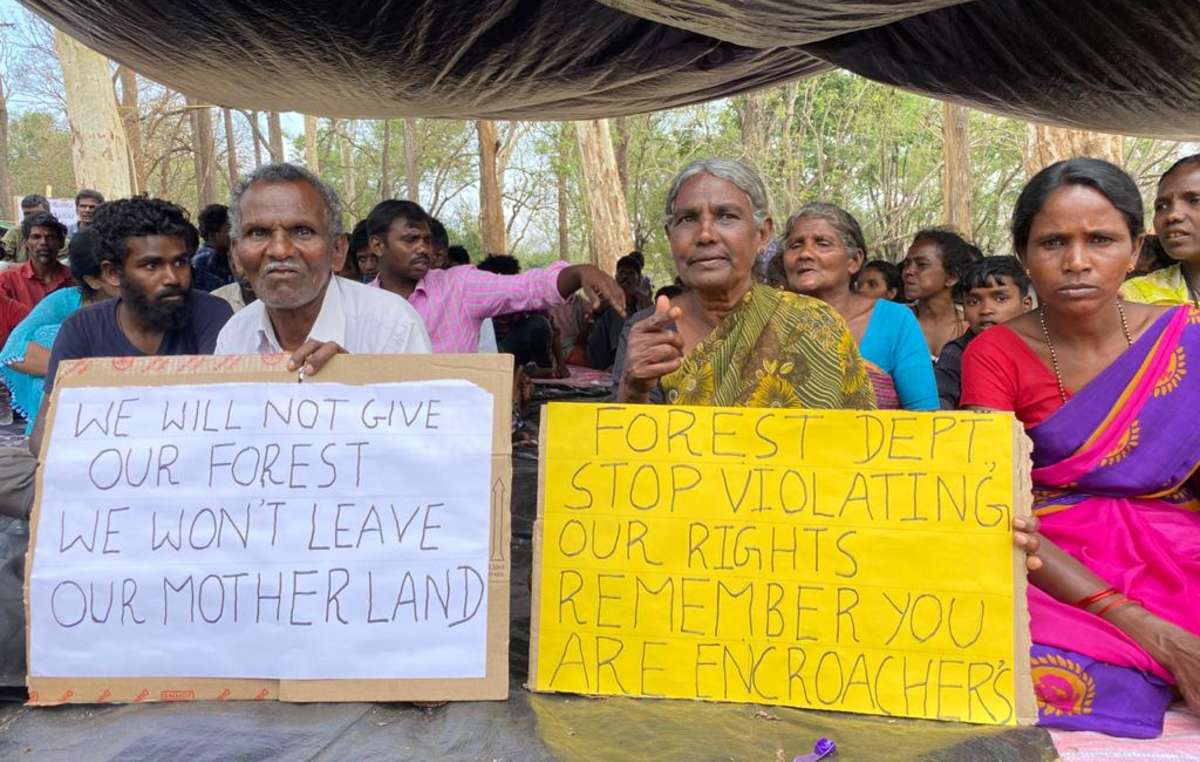
by DGR News Service | Apr 1, 2021 | Colonialism & Conquest, Indigenous Autonomy, Movement Building & Support, Protests & Symbolic Acts, Repression at Home, The Problem: Civilization
Indigenous peoples worldwide are the victims of the largest genocide in human history, which is ongoing. Wherever indigenous cultures have not been completely destroyed or assimilated, they stand as relentless defenders of the landbases and natural communities which are there ancestral homes. They also provide living proof that humans as a species are not inherently destructive, but a societal structure based on large scale monoculture, endless energy consumption, accumulation of wealth and power for a few elites, human supremacy and patriarchy (i.e. civilization) is. DGR stands in strong solidarity with indigenous peoples.
This article was originally published by Survival International on March 22, 2021
Featured image: Jenu Kuruba protest against the Forest Department and say “stop violating our rights”.
© Survival
___________________________________________________________________________
Hundreds of Jenu Kuruba people have launched an indefinite protest in the Nagarhole National Park, India, to demand that the authorities stop trying to evict them, and recognize their rights to the forest.
The tribe, renowned for their honey-gathering skills, are camped outside the Nagarhole Forest Rangers’ office. Their lands have been turned into a tiger reserve for tourists, and many Jenu Kuruba have already been forcibly evicted by India’s Forest Department, with the backing of the Wildlife Conservation Society.
According to India’s Forest Rights Act (FRA), the tribe has rights to live in, “protect” and “conserve” their lands.
The Jenu Kuruba’s rights to their lands should have been recognized many years ago – they first submitted their claims in 2009. But like many tribes across the country, their claims have been ignored.
JK Thimma, a Jenu Kuruba leader from Nagarhole, said today: “We Adivasi [tribal] people know how to take care of the forest and animals and we can do this much better than them. This is what we should fight for. We want the Forest Department to leave and hand over the forest to us, we will take care of the forest.”
The evictions and harassment that the Jenu Kuruba have endured are part of a racist and colonial conservation model that takes indigenous peoples’ land and turns it into protected areas for tourism, accompanied by gross human rights abuses.
The protest comes at a time when dissent is being brutally crushed in Modi’s authoritarian India. The police response to farmers’ protests in Delhi sparked international outrage and many Adivasi activists, such as Hidme Markam, have been arrested and imprisoned for speaking out.
For many years, WCS India has led the call for the relocation of tribal peoples from tiger reserves, insisting these are “voluntary relocations” which benefit the tribes. Yet communities report worse living conditions and a desire to return to their forest, prompting the US government to halt funding for relocations in the name of conservation.
JK Thimma told Survival: “WCS go to the Forest Department and bring officials and come here to tell us to leave.” He added: “We don’t want any money. We want to live free in the forest. The tribes, the forest and the animals are all one thing. If the officials come and shoot us we are ready to die, but not to leave the forest.”
The Jenu Kuruba have lived in and protected the forests of Karnataka for millennia.
They worship the tiger, and their careful management of the forest has ensured a healthy tiger population.
Muthamma, a Jenu Kuruba woman explained: “We’ve lived together with tigers for centuries, we don’t kill them and the tigers don’t kill us. We revere the tiger as a deity; we have a tiger altar over in the forest. The conservationists from the city don’t understand the forest. As long as we’re alive the tigers will still be safe. If we disappear, the loggers and poachers will have free rein.”
Another forest-dwelling tribe, the Soliga, were the first tribe to get their community forest rights recognised in a tiger reserve – which then saw tiger numbers increase far more than the national average.
Survival’s Senior Researcher Sophie Grig said today: “The Jenu Kuruba face constant harassment and threats from forest guards, who stop them from growing their food, building their houses, practicing rituals in their sacred groves or accessing their family graves. All these are flagrant violations of their rights. The Jenu Kuruba are the true conservationists and protectors of Nagarhole’s forests – it’s high time that their rights to live in, protect and conserve their ancestral lands are recognised.”
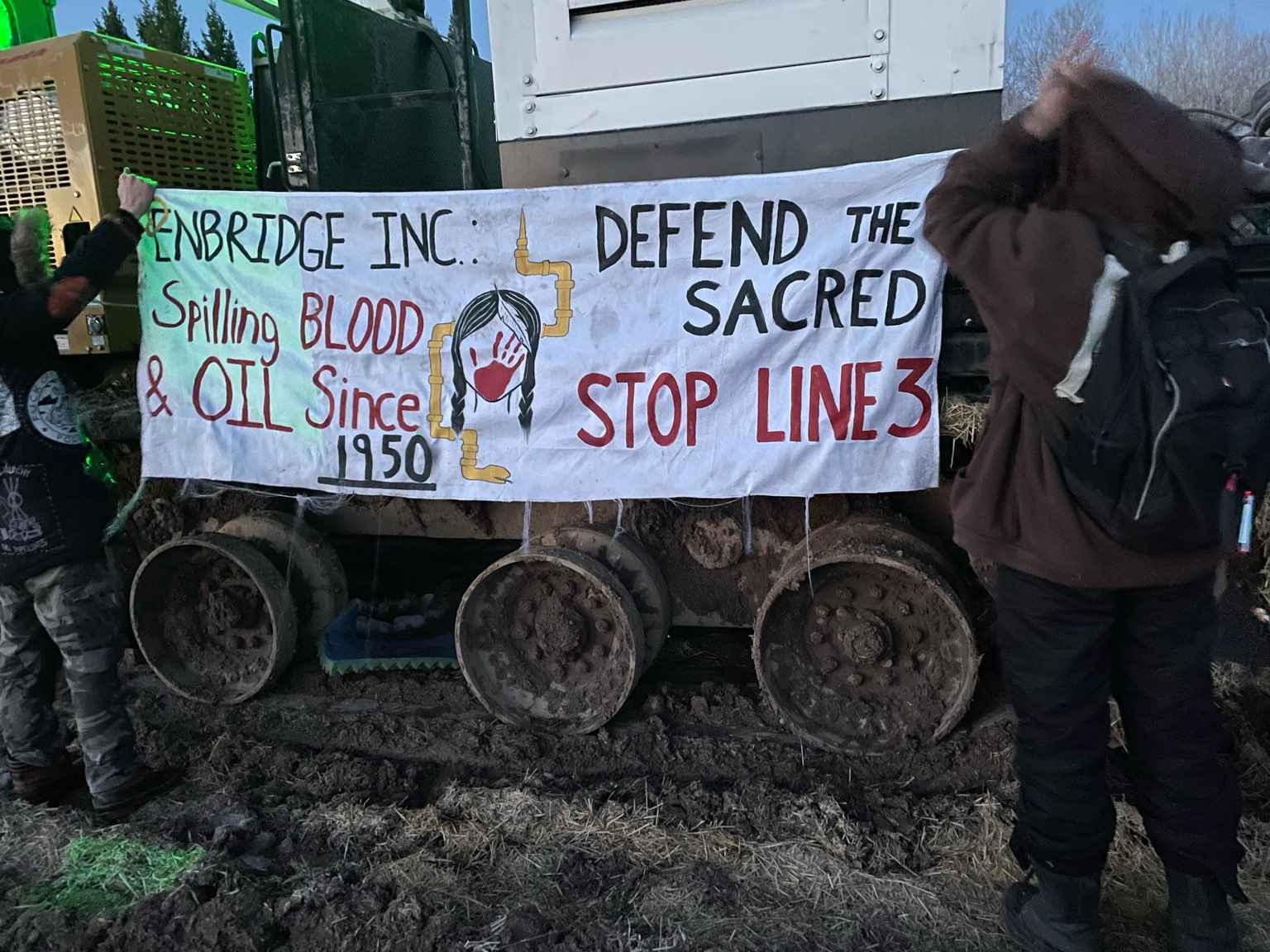
by DGR News Service | Mar 20, 2021 | Biodiversity & Habitat Destruction, Direct Action, Movement Building & Support, Obstruction & Occupation, The Problem: Civilization, Toxification
Deep Green Resistance aims to amplify the voices of marginalised people, stand in solidarity with the natural world and support direct action that protects our ecosystems.
News Alert
Two actions are taking place on the front lines of the Line 3 resistance movement today. Both Camp Migizi and the Giniw Collective are shutting construction down!
From Camp Migizi: A lockdown at a construction site in St Louis county. Find more information on Instagram, Twitter, and from the live streams on their Facebook page.
From the Giniw Collective: 7 water protectors locked down at a Line 3 pump station. Boost this action on
Instagram,
Facebook, and
Twitter!
Water Protectors Blockade Line 3 Pump Station
(Swatara, MN) Thursday morning, 7 water protectors locked to each other, blocking work on an Enbridge Line 3 pump station.
Enbridge announced it will be ceasing work in sensitive wetland areas per Minnesota law, but will continue work on pump stations and sites in “non-sensitive areas”. A steady stream of water protectors committed to stand with Anishinaabe treaty territory and future generations grows.
The action follows a visit to the Line 3 resistance by Oscar-winning actress Jane Fonda, who is helping to bring the Ojibwe-led struggle into the national spotlight and reach the Biden administration. It is also the week of Representative Deb Haaland’s confirmation as the first Native cabinet member in U.S. history.
As the spring thaw comes to northern Minnesota, the trees are running with maple sap and many Ojibwe have begun the boil for syrup.
Water is life, and it takes many forms. It is on us to protect our Mother.
Water protector Dakota McKnight said,
“Today I am participating in direct action to against the Line 3 pipeline. I am a student at Macalester College, which is shamefully invested in Enbridge. As person who is of settler descent, I stand in solidarity with the Indigenous people who been fighting colonialism since the Inception of America.”
A Water Protector named “Quintin” said,
“I am here to take action in solidarity with Natives who are fighting this pipeline that is desecrating the land. When institutions fail us, direct action is one of the last mechanisms that hold our power.”
![The History Of Thacker Pass [Dispatches from Thacker Pass]](https://dgrnewsservice.org/wp-content/uploads/sites/18/2021/02/Thacker-Pass-Max-Wilbert.jpeg)
by DGR News Service | Mar 1, 2021 | ACTION, Biodiversity & Habitat Destruction, Mining & Drilling, Obstruction & Occupation
Upon completion of forty days of launching a protest camp in the proposed site for lithium mining in Thacker Pass, Max delves into the history of the area.
Featured image: Max Wilbert
By Max Wilbert/Protect Thacker Pass
Forty days ago, my friend Will Falk and I launched a protest camp here at Thacker Pass.
Situated between the Montana Mountains and Double H Mountains in northern Nevada, Thacker Pass is part of the “sagebrush ocean.” Big sagebrush plants, the keystone species here, roll away to the south and east of the camp. Stars light up the night sky. Often, the only sound we can hear is the wind, the chirping of birds, the yips of coyotes.
The seasons are unfolding. When we arrived, the mountains were auburn in the evening sun. Now, they shimmer bright white after winter storms. Cliffs and sagebrush protrude through the snow and provide habitat for wildlife: bobcats, mule deer, pronghorn antelope, sage-grouse, pygmy rabbits, burrowing owls, and countless others.
We are here in the bitter cold wind to oppose the destruction of this place. Lithium Americas Corporation, and their subsidiary Lithium Nevada Corporation, plan to blow up this pass, extract millions of tons of stone, and build an array of infrastructure to process this into lithium with harsh chemicals like sulfuric acid. Along the way, they will build vast mountains of toxic tailings, leaching heavy metals and uranium into what groundwater will still remain after they pump nearly 1.5 billion gallons per year into their industrial machinery.
For weeks now, I have been researching the true history of this place. I have struggled with how to tell these stories. There are many perspectives on Thacker Pass, and many ways the story can be told.
Where to begin? There are no true beginnings or endings here, where water cycles endlessly from sky to mountain to soil to river to sky, and back again; where human existence passes as fading footprint in the soil, as bones sinking into land, as a whisper on the `breeze. Only stories upon stories, legends and myths, layers of soil and stone. But there is a beginning.
Nineteen million years ago, a column of magma deep within the mantle of the planet arose under the continental plate. Heat and pressure built through miles of stone, liquifying it. Superheated water forced its way to the surface, and geysers appeared. Pressure kept building, and one day, the first volcanic eruption tore open the crust, spewing ash across half the continent.
This was the birth of the Yellowstone Hotspot, an upwelling of heat from deep inside the planet that even now, after migrating hundreds of miles northeast, powers the geysers of Yellowstone National Park.
After a time, the magma was spent. Vast chambers once filled with magma, miles underground, were now empty, and the weight of the stone overhead pressed down. Soon, the ground itself collapsed across an area of more than 600 square miles, and the McDermitt Caldera, of which Thacker Pass is a part, was formed.
The new caldera attracted water. Rain fell and flowed downhill. With wind and water and ice, rich volcanic stones became pebbles, then sand, then clay. Sediments gathered in lake basins, and one element in particular — lithium — was concentrated there.
In one version of the story of Thacker Pass — the version told by Lithium Americas — geologic conditions created a stockpile of valuable lithium that can be extracted for billions of dollars in profits. In this version of the story, Thacker Pass is a place that exists to fuel human convenience and industry — to store power for the wealthy, the consumers of gadgets and smartphones and electric cars, for the grid operators.
In this story, the lithium in the soil at Thacker Pass does not belong to the land, or to the sagebrush, or to the water trickling down past roots and stones to join ancient aquifers. It belongs to the mining company which has filed the proper mining claim under the 1872 mining law, which still governs today.
In another version of this story, this land called “Thacker Pass” is part of the Northern Paiute ancestral homeland. I do not know the Paviotso name for this place. Wilson Wewa, a Northern Paiute elder, says that “the world began at the base of Steens Mountain,” a hundred miles north-northwest of here. Wewa tells that the people emerged from Malheur Cave, a 3,000-foot-deep lava tube near the modern town of Burns.
Northern Paiute have lived on these lands since time immemorial. Scientists have dated nearby petroglyphs as perhaps 15,000 years old — the oldest in North America. Obsidian from Thacker Pass has been gathered, worked into tools sharper than the finest modern scalpel, and traded across the region for thousands of years. There are even burial sites in the caves nearby, directly adjacent to the mine site, according to a Bureau of Land Management Ranger who visited us at camp this week.
I am told that Sentinel Rock, which stands over the Quinn River Valley at the eastern end of Thacker Pass, was an important site for prayer historically. If the mine is built, Lithium Americas’ water pipeline will skirt Sentinel Rock, pumping out billions of gallons of water. I cannot help but think: how much more can the colonizers take?
I cannot tell the story of the history of this place from the perspective of the Northern Paiute, but it would be wrong to not at least summarize what I know. Too often, the invasion of these lands by European settler-colonialists is ignored. When we ignore or minimize genocide, we make future genocide easier. As the Czech writer Milan Kundera said, “The struggle of man against power is the struggle of memory against forgetting.”
In the 1850’s, colonization of these lands began in earnest. The coming of the white colonizers and their cattle meant the overgrazing of the grasslands and the cutting of the Pinyon Pine trees; the damming of the creeks and rivers; the trapping of the beavers and the killing of the wolves.
In 1859, the discovery of the Comstock lode marked the beginning of the mining explosion. Thousands of people flocked to Nevada, and their axes and cattle and saws devastated the land. Smelting the ore from the mines required every bushel of firewood that could be found.
Ronald Lanner, in his book The Piñon Pine: A Natural and Cultural History, writes that “the furnaces of Eureka [Nevada], working at capacity, could in a single day devour over 530 cords of piñon, the produce of over 50 acres… After one year of major activity, the hills around Eureka were bare of trees for ten miles in every direction… by 1878 the woodland was nowhere closer than fifty miles from Eureka, every acre having been picked clean… The significance of the deforestation around Eureka can be appreciated by realizing that a fifty-mile radius from that town approaches to within a few miles of Ely to the east and of Austin to the west. Both of these towns were also important mining centers with large populations, and their demands for woodland products probably rivaled those of Eureka itself.”
Lanner continues: “The deforestation of their hills and the destruction of their nut groves often brought Indians into conflict with white settlers and miners. As early as 1860, Paiutes gathered at Pyramid Lake to decide how to cope with the white men who were encroaching on their lands, killing their game, and cutting down what the settlers derisively referred to as the Indians’ ‘orchards.’”
My friend Myron Dewey, who lives on the Walker River Paiute Reservation, told me the piñon pine are to his people as the buffalo are to the nations of the Great Plains: a sacred relative, source of life, an elder being.
Wilson Wewa also tells of how European colonization dispossessed the Northern Paiute. “Pretty soon our people were having to compete with miners and settlers for food. They were killing all the deer, and the antelope, and their cattle were chomping up and destroying all the root digging grounds we relied on for food.”
The scale of ecological devastation unleashed on Nevada by the mining industry is hard to comprehend. With forests gone, soils eroded, biodiversity collapsed, and streams dried up. The damming of creeks and mass trapping of beavers were another nail in the coffin of the hydrological cycle. From the north to south, east to west, colonization destroyed the waters of the region. And what are people to do when their source of life is destroyed? This devastation played a large role in the Paiute War in 1860, the Snake War of 1864-8, the 1865 Mud Lake massacre, the Modoc War of 1872-3, the Bannock War in 1878, the Spring Valley massacres of the 1860’s and 1897, and many other conflicts.
To this day, the results of this destruction are still playing out, from Winnemucca Lake — once a wildlife refuge, home to the previously mentioned oldest petroglyphs in North America, now dry — to Walker Lake, the level of which has fallen more than 181 feet over the last 139 years, causing the extirpation of the Lahontan cutthroat trout. The nearby Walker River Paiute tribe — the Agai-Dicutta Numu, trout eaters — can no longer fish for their namesake.
The piñon pine are still being destroyed, too — this time under the guise of “restoration.” Myron Dewey, who I mentioned earlier, and many others, have long been fighting to protect the “tubape” pine nut trees.
And the war footing remains as well. The largest ammunition depot in the word, the Hawthorne Army Depot, sprawls across 226 square miles just south of Walker Lake.
Back here at Thacker Pass, the same Lahontan cutthroat trout (a federally listed threatened species) hang on in nearby Pole Creek. Will they survive the mine? Or will their creek shrink smaller and smaller as the water table drops, eventually leaving them with nothing? I cannot help but feel there are similarities between the experience of the Paiutes — land stolen, waters destroyed, marched to reservations — and the trout. Perhaps Wewa would agree with a Dakota friend, who told me “I am part of the land; what happens to the land happens to me.”
###
The 1872 mining law is law under which Lithium Americas Corp. has “claimed” the land here Thacker Pass, under which they have been permitted to destroy this place. A one hundred- and fifty-year-old law, a legal justification for colonial extraction, a law created to make extraction orderly. That is the legal authority which Lithium Americas claims.
In September of 2019, the Inter-Tribal Council of Nevada, which is made up of 27 tribal, band, and community councils from the Western Shoshone, Goshute, Washoe, and Northern and Southern Paiute nations passed a resolution, which called for reform of the 1872 mining law. The resolution states that “the Great Basin tribes believe the 1872 Mining Law poses a serious threat to the Great Basin tribes land, water, cultural resources, traditional properties, and lifeways.”
###
I circle back to that name: Thacker Pass. “Who was Thacker,” I wonder, watching the first Dark-eyed Junco of the spring migration flit from sagebrush to ground.
Basic research found nothing, so I called the Nevada Historical Society and the Humboldt County Museum, and started combing through archives looking for prominent people named ‘Thacker’ in the history of the state and of Humboldt County. Digging through old copies of the Reno Evening Gazette, I find a match: John N. Thacker, who was elected sheriff of Humboldt County on November 3rd, 1868, and held the post for many years before becoming the head of the detective service for the Southern Pacific Company and Wells Fargo express through the 1870’s and into the 1880’s.
Thacker was an enforcer and lawman in the Wild West of train robberies and outlaws hiding in canyons — and the laws he enforced were in large part designed to protect the mining industry. Throughout the late 1800’s, Nevada mines produced an incredible amount of wealth – the equivalent of billions of dollars annually. Gold and silver from the mines were transported by stagecoach and train by well-paid mining and banking employees, and this made a tempting target for thieves. Thacker had at least one shootout with bandits who had absconded into the hills.
In other words, Thacker acted as a protector of mining revenues and an economy based on colonial mining. He worked for the state, the bankers, and the railroad company – the trifecta of institutions creating the conditions for mining to thrive, financing mining projects, and moving ore and raw materials to bigger markets. And, of course, profiting handsomely.
Many people forget the importance of railroads in this era before paved roads. The first transcontinental railroad passed through Winnemucca, operated by Southern Pacific. As Richard White writes in his book Railroaded, the massive land grants given to railroad companies — a total of more than 175 million acres between 1850 to 1871, more than 10 percent of the land mass of the United States — and easy transportation of both people and goods kicked off a massive influx of settler-colonialism to the interior of the American west.
Railroad companies were notorious in this period for corruption, environmental devastation, and mistreatment of workers. Interestingly, Southern Pacific was the defendant in a landmark 1886 Supreme Court case that massively extended the power of corporations in the United States. In Santa Clara County v. Southern Pacific Railroad, Thacker’s employer successfully argued that the Fourteenth Amendment – originally established to protect formerly enslaved people in the aftermath of the Civil War – also applied to so-called “corporate persons,” striking down various regulations that would have reigned in their power in the West.
Since this unanimous decision, corporations have relied heavily on the Fourteenth Amendment for protection from the public. As my friend and attorney Will Falk writes, “between 1868, when the Fourteenth Amendment was ratified, and 1912, the Supreme Court ruled on only 28 cases involving the rights of African Americans and an astonishing 312 cases on the rights of corporations, it is easy to conclude that the Fourteenth Amendment has done a better job protecting the rights of corporations than that of African Americans.”
Dana Toth at the Humboldt County Museum helps solve the rest of the mystery: an 1871 newspaper shows that John Thacker owned a 160-acre ranch in the King’s River Valley, just to the west of Thacker Pass. That is most likely the origin of the name Thacker Pass.
###
A cold north wind has been blowing all morning at Thacker Pass. It was 16 degrees this morning, without the wind chill. The frigid air bites my fingertips and my nose. Our banners flap in the breeze.
And at the headquarters of Lithium Americas Corporation at 300-900 West Hastings Street in Vancouver, Canada, men and women plan how to blow this place up, to shatter the mountainside, to crush the wild integrity of this place under churning bulldozer treads, and turn it into money.
I look out across a landscape named after a man named John Thacker, a man who worked to protect mining industry profits for decades, and I cannot help but feel that not much has changed. Like in the 1850’s and 1860’s, men with explosives, backed by the armed power of the state, are coming to destroy the mountains, the sagebrush steppe, the grasslands, and the waters of Thacker Pass.
What value is there in history, except in guiding our thoughts and actions in the present? As Barbara Ehrenreich writes, “To know our history is to begin to see how to take up the struggle again.”
For more on the issue:










![The History Of Thacker Pass [Dispatches from Thacker Pass]](https://dgrnewsservice.org/wp-content/uploads/sites/18/2021/02/Thacker-Pass-Max-Wilbert.jpeg)